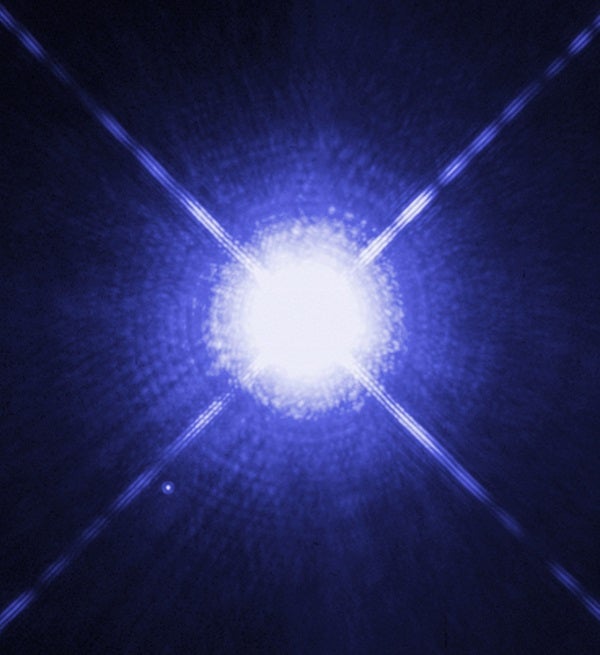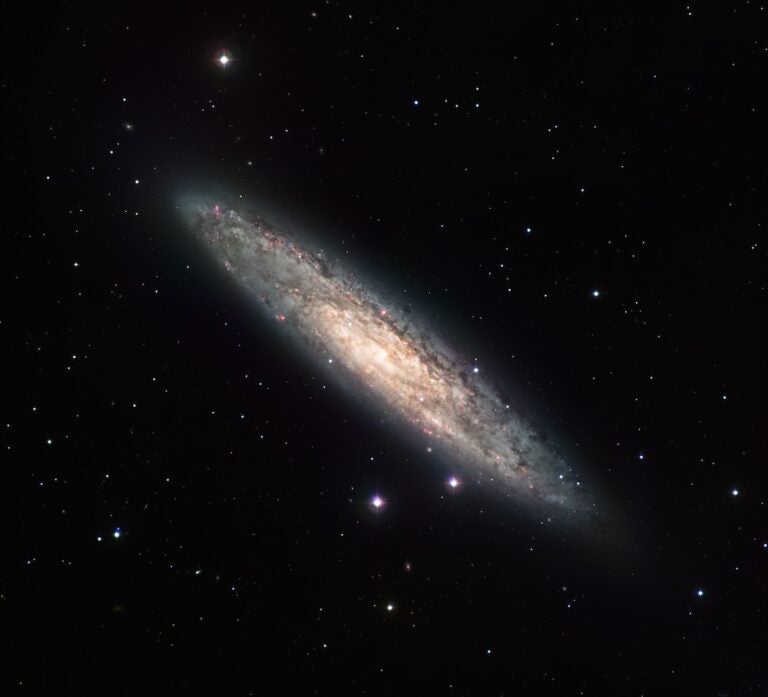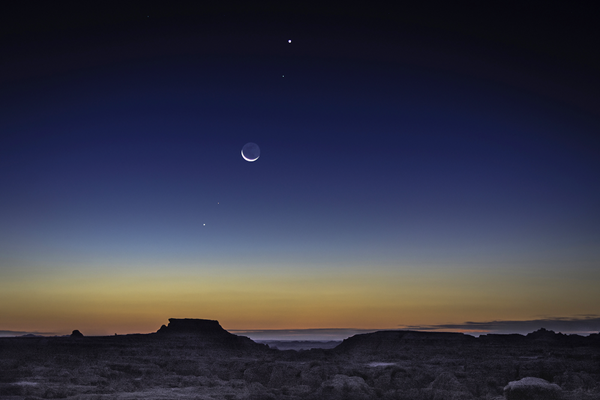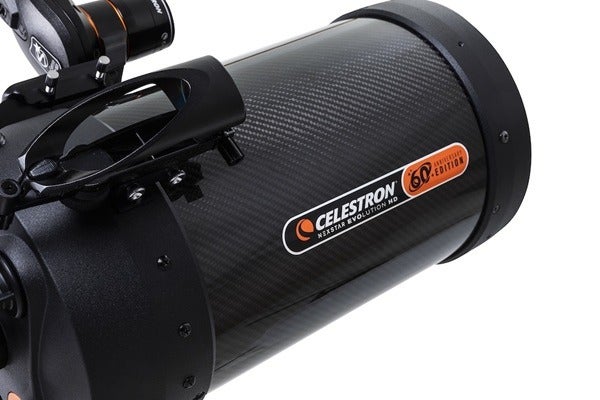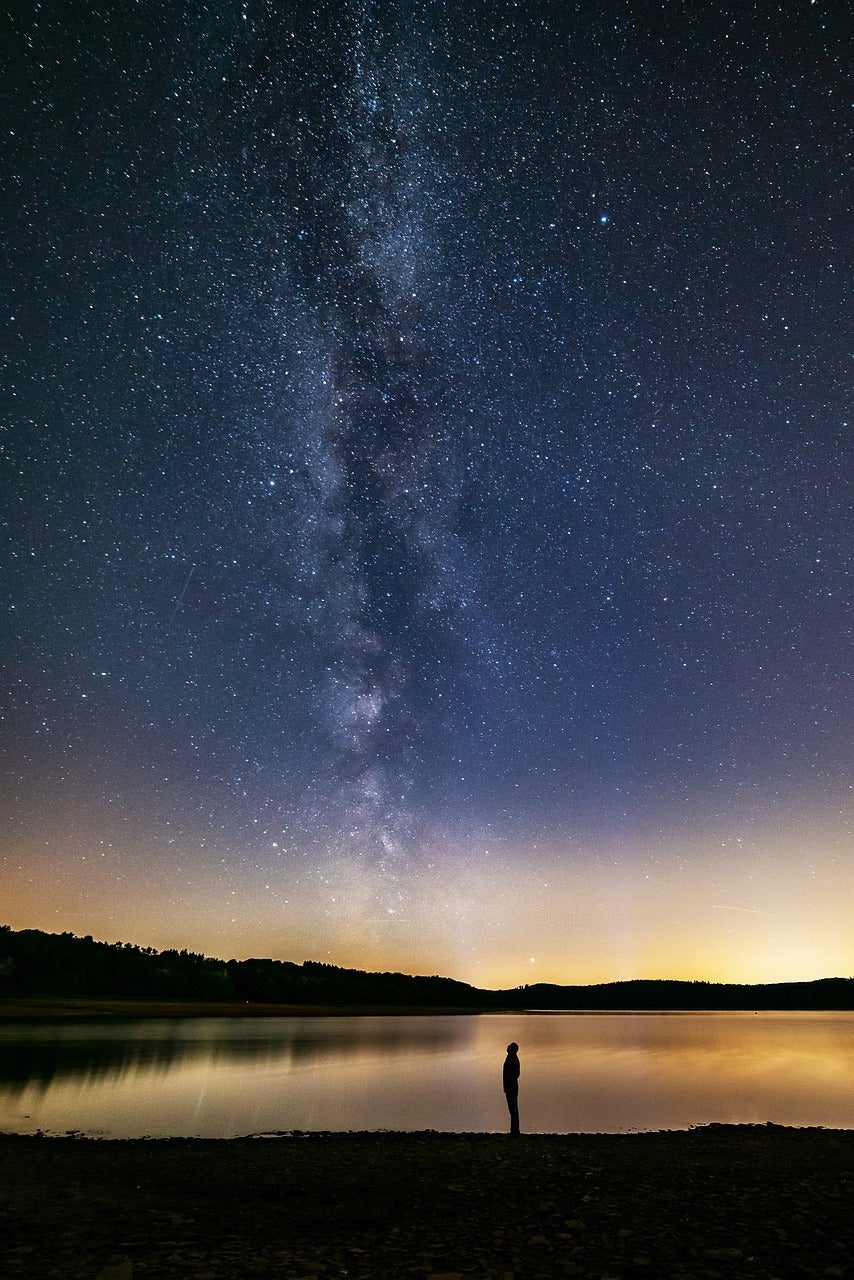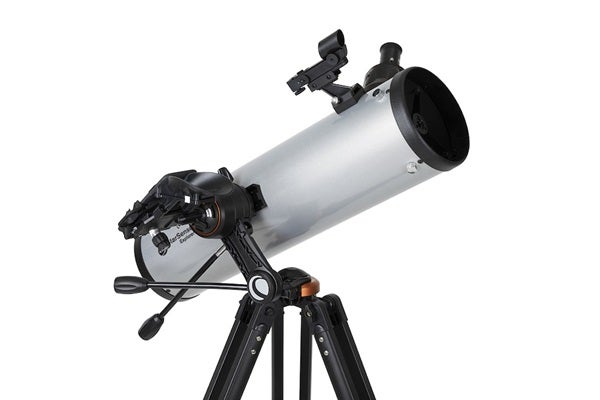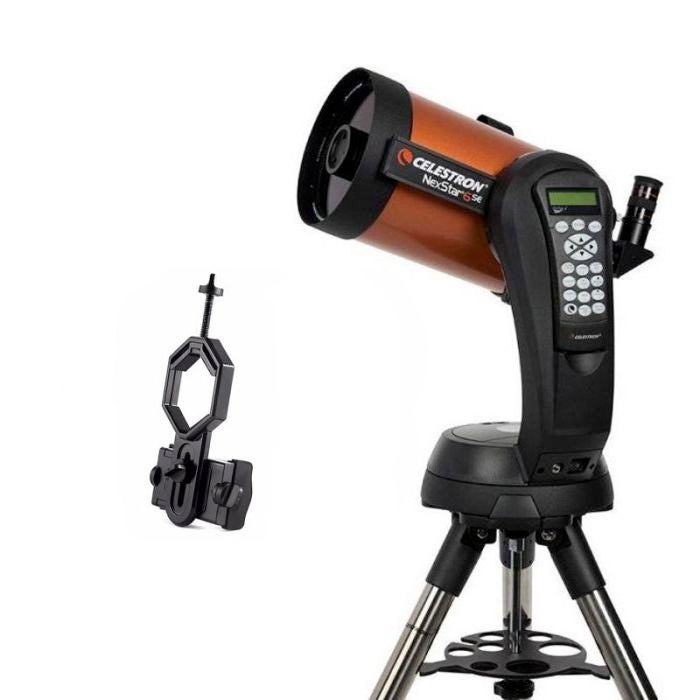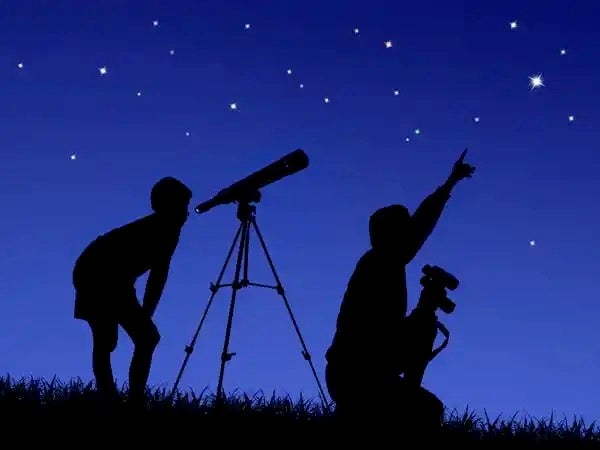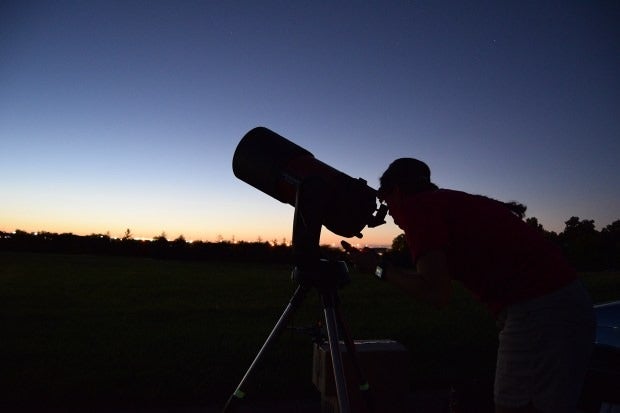Well, white dwarfs still twist my head — especially now, when the half-century waiting period is over and we can finally see the most famous one. I’m talking about the Pup, companion to the Dog Star, Sirius.
That alpha star of the Big Dog constellation was considered bad news for a thousand years. In the Roman Empire, its presence was so ill-omened that hit men were sometimes employed to sacrifice dogs after Sirius rose. Even Dante wrote of the star as “the scourge of days canicular.”
The Dog Star had better press in ancient Egypt, where they believed July’s sky-proximity between the Sun and the brightest star caused the summer’s heat. Even today we use the expression “dog days” to mean sultry weather, most people unaware that its origins echo from those vanished centuries.
In real life, December’s dinnertime rising of Sirius provides not warmth but a psychedelic light show. When that dazzling starpoint shines through cold, thick horizon air, the result is often a kaleidoscope of rapidly changing color. I’ve received a half-dozen UFO calls over the years that proved to be the madly mutating Dog Star. Its mongrel maelstrom of color is the result of its spectral A-type light refracted by prismlike air layers, transmitting alternating parts of its vivid glow. Sirius is a great target for a spectroscope.
Of course, viewing Sirius means seeing the combined light of two famous stars. Circling each other every 50 years in a wildly eccentric orbit, they are finally far apart. Now and for the next few years, you can glimpse the dim Pup a comfortable 10″ from the blazing primary, especially if you nudge the scope to keep Sirius A’s insane dazzle out of the field.
Sirius B is a sphere only about the size of Earth, yet its mass some 350,000 times greater means it has collapsed to an interesting degree. On Earth, the densest materials are about 20 times heavier than water. But Sirius B is about 130,000 times denser than water.
Imagine landing on its diamond-hard surface. Even if you could shield yourself from the heat, its merciless gravity would freeze all your motion like a frame in a jammed projector. Your lungs could not take one breath, nor your muscles lift a single finger to warn others. Yet these fantastic stars are common. Of the 58 suns lying within about 16 light-years of Earth, five are white dwarfs. Sirius B takes honors as the nearest. But twice its distance, at 16 light-years — also optimally seen this month — lies the easiest white dwarf to spot, and my favorite. Simply follow the starry line that heads right from Rigel to form Eridanus the River, and you’ll quickly reach two matching 4th-magnitude stars. Point your trusty scope at the bottom one. Call it 40 Eridani. Or Omicron2 (ο2) Eridani. Or Keid. A mere 50x shows the main star has a distant double-star companion, discovered by William Herschel two years after he found Uranus. This companion pair is an easy binary separated by 8″. The brighter of these two is the white dwarf, the first ever recognized.
And call the pound: This same patch of December sky has yet another dog running loose. Between Sirius and Keid we have Procyon, sitting just 11.4 light-years away. Can it be that the brightest star of the Little Dog has a white dwarf companion rivaling the Big Dog’s? And that both systems have orbital eccentricities of about 0.4? With both orbiting at a separation of around 20 astronomical units, matching the Sun-Uranus separation?
Yes, it’s true: All our Dog Stars have dense little pups. It’s weird, but also kind of cute.

